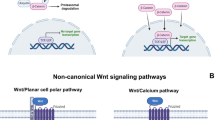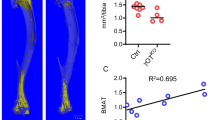Abstract
Achyranthes bidentata, is a herbal plant commonly used in the treatment of osteoporosis and bone nonunion in the Traditional Chinese Medicine. Saponins are the major compounds extracted from Achyranthes bidentata that have been shown to exert various pharmacological activities such as anti-inflammatory, antipyretic, antirheumatic, diuretic, and anti-osteoporosis. The Achyranthes bidentata saponins (ABS) were found to induce proliferation and differentiation in bone marrow stromal cells (BMSCs) as determined by the cell proliferation and alkaline phosphatase assays. Also, following the osteogenic induction, cells treated with ABS showed increased mRNA levels of rat bone morphogenetic protein-2, runt-related transcription factor 2, and osterix. Furthermore, ABS stimulated the activation of ERK as evidenced by increased phosphorylation of these proteins, which was blocked by an inhibitor of ERK (PD98059). Taken together, these results suggest that ABS stimulated osteogenic differentiation of BMSCs via activation of the ERK signaling pathway.




Similar content being viewed by others
References
Niu, Y., Li, Y., Huang, H., Kong, X., Zhang, R., Liu, L., et al. (2011). Asperosaponin VI, a saponin component from Dipsacus asper wall, induces osteoblast differentiation through bone morphogenetic protein-2/p38 and extracellular signal-regulated kinase 1/2 pathway. Phytotherapy Research, 25(11), 1700–1706.
Licata, A. A. (2005). Discovery, clinical development, and therapeutic uses of bisphosphonates. Annals of Pharmacotherapy, 39, 668–677.
Zhang, P., Dai, K. R., Yan, S. G., Yan, W. Q., Zhang, C., Chen, D. Q., et al. (2009). Effects of naringin on the proliferation and osteogenic differentiation of human bone mesenchymal stem cell. European Journal of Pharmacology, 607(1–3), 1–5.
Berger, I., Piecha, G., Rabkin, R., Kaya, N., Geldyyev, A., Sun, D., et al. (2007). Growth hormone treatment prevents osteoporosis in uremic rats. Histology Histopathology, 22(11), 1231–1239.
Luhe, A., Kunkele, K. P., Haiker, M., Schad, K., Zihlmann, C., Bauss, F., et al. (2008). Preclinical evidence for nitrogen-containing bisphosphonate inhibition of farnesyl diphosphate (FPP) synthase in the kidney: Implications for renal safety. Toxicology in Vitro, 22(4), 899–909.
Nikolov, S., Thuan, N., & Zheljazkov, V. (1996). Flavonoids from Achyranthes Bidentata BC. Acta Horticulturae, 426, 75–78.
Shi, C. J., Zhou, Y. D., Zhang, J. B., & Tian, G. Y. (2006). Researches of polysaccharides from Achyrnthes bidentata. Chinese Journal of New Drug, 15, 1330–1334.
Li, J. X., Hareyama, T., Tezuka, Y., Zhang, Y., Miyahara, T., & Kadota, S. (2005). Five new oleanolic acid glycosides from Achyranthes bidentata with inhibitory activity on osteoclast formation. Planta Medica, 71(7), 673–679.
Wattel, A., Kamel, S., Prouillet, C., Petit, J. P., Lorget, F., Offord, E., et al. (2004). Flavonoid quercetin decreases osteoclastic differentiation induced by RANKL via a mechanism involving NF kappa B and AP-1. Journal of Cellular Biochemistry, 92(2), 285–295.
Meng, D. L., & Li, X. (2001). The research development in the chemical constituents and pharmacological activities of Achyranthes bidentata Bl. Chinese Journal of Medicinal Chemistry, 11, 120–124.
Yuan, Y. J., Cui, Y., Yu, Y., & Yong, Y. H. (2002). Different mechanisms mediate the exciting effect about Achyranthes bidentataon the spike activity of the uterine smooth muscle in virgin rats. Journal of Veterinary Science and Technology, 32(12), 8–12.
Zhang, W. X., Yang, S. L., Zhang, X. S., Xue, D. M., Zhang, S. L., & Wei, J. D. (2002). The relationship between anti-implantation of Achyranthes bidentata Bl. and mast cell in the uterus. Chinese Journal of Immunology, 18(7), 492–495.
Wang, Y. F., Wang, Q. D., Liu, C. J., Jiang, J. H., Sun, W. X., & Xia, W. (1997). Antitumor activity of the crude saponins from Achyranthes bidentata. Journal of Henan Medical University, 32(4), 4–6.
Gao, C. K., Gao, J., Ma, R. L., Xu, X. X., Huang, P., & Ni, S. D. (2003). Research on analgesic and anti-inflammatory and invigorate circulation effects of total saponins of Achyranthes. Anhui Medical of Pharmaceutical Journal, 7(4), 248–249.
Liu, X. P., Chen, F. L., & Cheng, Y. J. (2005). Study of total isoflavone from Astragalus membranaceous on the prevention of osteoporosis in rats. Zhejiang JITCWM, 15(5), 282–283.
Ren, X. C., Xu, X. X., Xu, D. J., & Gao, J. (2011). Effects of Achyranthes bidentata saponins on bone metabolism of osteoporosis rats induced by retinoic acid. Chinese Journal of Experimental Traditional Medical Formulae, 17(4), 128–130.
Pearson, G., Robinson, F., Beers Gibson, T., Xu, B. E., Karandikar, M., Berman, K., et al. (2001). Mitogen-activated protein (MAP) kinase pathways: Regulation and physiological functions. Endocrine Reviews, 22(2), 153–183.
Jaiswal, R. K., Jaiswal, N., Bruder, S. P., Mbalaviele, G., Marshak, D. R., & Pittenger, M. F. (2000). Adult human mesenchymal stem cell differentiation to the osteogenic or adipogenic lineage is regulated by mitogen-activated protein kinase. Journal of Biological Chemistry, 275(13), 9645–9652.
Sale, E. M., Atkinson, P. G., & Sale, G. J. (1995). Requirement of MAP kinase for differentiation of fibroblasts to adipocytes, for insulin activation of p90 S6 kinase and for insulin or serum stimulation of DNA synthesis. EMBO Journal, 14(4), 674–684.
Komori, T., Yagi, H., Nomura, S., Yamaguchi, A., Sasaki, K., Deguchi, K., et al. (1977). Targeted disruption of Cbfa1 results in a complete lack of bone formation owing to maturational arrest of osteoblast. Cell, 89(5), 755–764.
Nakashima, K., Zhou, X., Kunkel, G., Zhang, Z., Deng, J., Behringer, R., et al. (2002). The novel zinc finger-containing transcription factor osterix is required for osteoblast differentiation and bone formation. Cell, 108(1), 17–29.
Nishio, Y., Dong, Y., Paris, M., OKeefe, R. J., Schwarz, E. M., & Drissi, H. (2006). Runx2-mediated regulation of the zinc finger Osterix/Sp7 gene. Gene, 372, 62–70.
Lee, M. H., Kim, Y. J., Kim, H. J., Park, H. D., Kang, A. R., Kyung, H. M., et al. (2003). BMP-2-induced Runx2 expression is mediated by Dlx5, and TGF-beta 1 opposes the BMP-2-induced osteoblast differentiation by suppression of Dlx5 expression. Journal of Biological Chemistry, 278(36), 34387–34394.
Turjanski, A. G., Vaque, J. P., & Gutkind, J. S. (2007). MAP kinases and the control of nuclear events. Oncogene, 26(22), 3240–3253.
Kirkham, G. R., & Cartmell, S. H. (2007). Genes and proteins involved in the regulation of osteogenesis. In: N. Ashammakhi, R. Reis & Chiellini E (Eds.). Topics in Tissue Engineering, vol. 3.
Author information
Authors and Affiliations
Corresponding author
Rights and permissions
About this article
Cite this article
He, G., Guo, W., Lou, Z. et al. Achyranthes bidentata Saponins Promote Osteogenic Differentiation of Bone Marrow Stromal Cells Through the ERK MAPK Signaling Pathway. Cell Biochem Biophys 70, 467–473 (2014). https://doi.org/10.1007/s12013-014-9942-3
Published:
Issue Date:
DOI: https://doi.org/10.1007/s12013-014-9942-3




